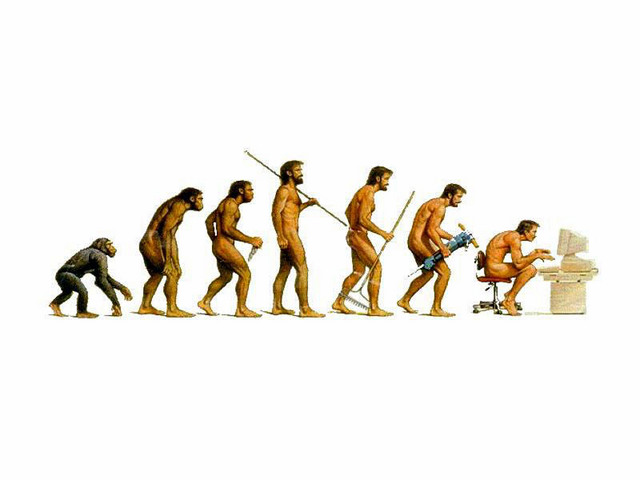The Evolution of a Definition: The ONL-OFL Continuum
 I thought it would be useful to compile all of the working definitions for the Online-Offline Continuum (ONL-OFL) that I've been developing over the past year and a half. It all started in my "Social and Communicative Aspects of the Internet" class during the fall of 2010...
I thought it would be useful to compile all of the working definitions for the Online-Offline Continuum (ONL-OFL) that I've been developing over the past year and a half. It all started in my "Social and Communicative Aspects of the Internet" class during the fall of 2010...
2010
Draft 1
The online/offline continuum is defined as an interactive and communication phenomenon characterized by the distribution of identities and social practices that shift between computer and non-computer mediated environments.
Draft 2
I define the online/offline continuum as an interactive and communication phenomenon that is characterized by the distribution of identities[1]and social practices that shift between computer and non-computer mediated environments.
[1] Sam Han reviews the history of Internet studies scholarship in his upcoming publication "Virtual Identities: From Decentered to Distributed Selves". I consider Han one of several scholars of an emerging new wave of scholarship that address the online/offline continuum. He suggests that we rethink assumptions about commonly held beliefs of virtual identity as disembodied and consider the process of identity construction as a sort of convergence (p. 25). In this analysis, I further introduce the concept of distributing identities as a way of understanding virtual identities in the future. Whether or not this conception proves meaningful to the scholarship is yet to be seen since further investigation is required.
2011
'Online' and 'offline' are not as distinct spheres, but may be conceptualized as a continuum of identities and socio-cultural practices across time, space, and of both computer-mediated and non-computer mediated interactions.
2012
Draft 1
I coin the term online-offline (ONL-OFL) continuum to describe a type of movement that shifts between computer (or machine)-mediated and non-computer (or non-machine)-mediated environments. As I describe this phenomenon, I am also arguing that the ONL-OFL continuum explains a theory of movement between and among networks across computer (or machine)-mediated and non-computer (or non- machine)-mediated environments.
Furthermore, it must be noted that the ONL-OFL continuum describes one type of movement of one type of network process between computer-mediated (or machine) and non-computer (or non-machine) mediated environments. Networks are a plural concept. For this reason, it is nearly impossible to present a single theory for the movement of all networks, since so many exist simultaneously, side-by-side, within and without each other. As well, movement of the ONL-OFL continuum, therefore, describes plurality of motion. Like with some articulations of theory, the ONL-OFL continuum seeks to explain a phenomenon of movement from multi-dynamic socio-cultural and communicative perspectives, which cannot be necessarily defined through typology, nor can it be absolutely traced if not for “things” also moving within an organized social space (Latour, 2005).
Current definition (2012)
The ONL-OFL Continuum describes what happens when our selves move, as well as describes the practices that constitute our selves moving within and among computer mediated and non-computer mediated contexts. Additionally, the ONL-OFL Continuum says that ‘connected’ realities inform ‘disconnected’ realities, and vice versa, and as such may very well result in the (re)shaping, (re)making, and co-construction of experiences across contexts.
It's worth noting that my ideas about movement (i.e. shifting and tracing) and being marked evolved once I began to ground them in the works of others like Bruno Latour and Gloria Anzaldua. This past year I've devoted a significant amount of brain power to fleshing out what it means to shift while allowing myself to be verbose for the sake of simply getting the ramblings out of my head. I think it's useful for anyone working on ideas to keep track of how they evolve. At this point, I'm more confident exploring ideas about movement and being marked as it relates to the ONL-OFL Continuum because folks like Leander and McKim (.pdf) and others have already been talking about the notion of tracing in the Latourian sense to frame concepts.
I'm currently re-reading Anzaldua's essay "now let us shift" (.pdf) in search for better grounding to further my discussions about being marked by trauma while shifting within/among 'connected' and 'disconnected' realities. I'm in the process of finishing a draft for an upcoming anthology in which I will take a more narrative approach to discuss how being marked by the trauma of confronting my late father in so-called 'cyberspace' both informs and is informed by the experiences I (re)member (as in re-organize and re-call) with him in 'disconnected' reality. Some argue that the traumatic dimension is a characteristic of the Lacanian 'Real'--i.e. that too strong, too intense Reality that can never really be experienced and instead is repressed through our everyday reality, also known as fantasy. This idea fascinates me because I believe we can and do experience the traumatic dimension while shifting in/among online and offline contexts as evident when we confront loved ones who have passed away yet still 'exists' via social networks, blogs, and online videos. Other ways I intend to continue exploring the notion of being marked by trauma, which is characteristic of the ONL-OFL Continuum, includes cyberbullying, 'cyber' racism, sexism, and sexual exploitation. Admittedly, I need to better familiarize myself with Lacan to see if I'm on the right track with his ideas. Nonetheless, I do believe there is a connection between trauma and being marked while shifting within/among computer mediated and non-computer mediated contexts. More on that in a latter post.
Ciao for now.
If anyone out there reading this would like to expand on my ideas or use them in other contexts, please be kind to cite my developing work:)